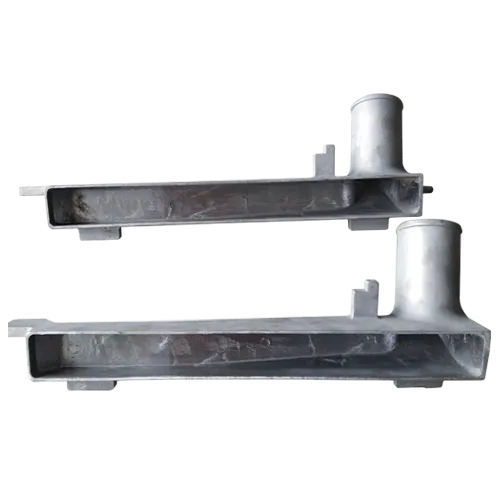Mobile:+86-311-808-126-83
Email:info@ydcastings.com
Brass Mold Casting Techniques for Quality Metal Fabrication and Design
Brass Mold Casting An Overview
Brass mold casting is a significant technique used in the manufacturing industry, characterized by the use of brass, an alloy of copper and zinc, to create a variety of components. This process is integral to numerous applications, from intricate decorative items to critical engineering parts, due to brass's desirable properties—particularly its excellent corrosion resistance, good mechanical strength, and attractive appearance.
The Process of Brass Mold Casting
Brass mold casting involves several key steps, beginning with the preparation of the mold. Molds are typically made from materials such as steel or iron, which can withstand high temperatures and repeated use. The molding process is often divided into two categories sand casting and permanent mold casting.
1. Sand Casting In this method, a mixture of sand, clay, and water is used to create a mold. This mixture is compacted around a pattern that shapes the interior of the mold. Once the mold is prepared, molten brass is poured into it. After cooling, the sand mold is broken away to reveal the cast brass object. This method is advantageous for producing complex shapes and is often used in small batch productions.
2. Permanent Mold Casting This approach uses a reusable metal mold, allowing for better dimensional accuracy and a smoother finish on the casted parts. The brass is poured into the heated mold, which helps the material solidify quickly. This method is more efficient for larger production runs and produces parts with a higher strength-to-weight ratio.
After the casting process, the components typically undergo several finishing procedures. These might include sanding, polishing, machining, and plating to achieve the desired specifications and surface finish.
Advantages of Brass Mold Casting
Brass mold casting offers numerous benefits. Firstly, brass excels in corrosion resistance compared to many other materials, making it ideal for applications exposed to moisture and various chemicals. Its durability also means that products will have a longer lifespan, reducing the frequency of replacements.
Secondly, brass has a natural antimicrobial property, which is particularly beneficial in applications such as plumbing fittings and medical instruments. The ability to resist bacterial growth enhances hygiene and safety in environments where cleanliness is critical.
brass mold casting

In terms of aesthetic appeal, brass has a natural shine and warm color, which is widely appreciated in decorative arts. This makes it a favored material for homeowners and designers alike in crafting decorative items, hardware, and fixtures.
Applications
The versatility of brass mold casting allows for a wide range of applications. In the automotive industry, brass components are essential for fittings, connectors, and various hardware. The plumbing sector extensively uses brass for faucets, valves, and pipe fittings due to its corrosion resistance.
Furthermore, brass is significant in electronics for connectors and switches, where conductivity is critical. Musical instruments also benefit from brass's tonal qualities and durability, adding a unique sound to woodwind and brass ensembles.
Challenges
Despite its advantages, brass mold casting presents challenges. The initial cost of mold production, especially for permanent molds, can be high, making it less favorable for small-scale production. Additionally, managing the melting and pouring processes requires expertise to ensure safety and minimize defects.
Also, with increasing awareness of sustainability, industries are looking into the environmental impacts of brass mining and the casting process itself. Recycling brass is becoming a compelling solution to mitigate these concerns, as it reduces waste and requires substantially less energy compared to primary production.
Conclusion
Brass mold casting remains a vital technique in modern manufacturing, combining the alluring characteristics of brass with effective casting methods to produce high-quality components for a multitude of applications. As technology advances, innovations in casting techniques and recycling processes promise to enhance the sustainability and efficiency of this age-old method.
-
Why Is Choosing the Right Motor Housing Critical for Engine Performance?NewsJul.18,2025
-
Which Impeller Types Best Optimize Your Pump’s Efficiency?NewsJul.18,2025
-
Optimize Maintenance Efficiency with Durable Oil Catch SolutionsNewsJul.18,2025
-
Maximize Pump Performance with Precision-Engineered ComponentsNewsJul.18,2025
-
Elevate Industrial Flow Systems with Precision-Engineered ComponentsNewsJul.18,2025
-
Boost Durability and Functionality with Precision Power CastingsNewsJul.18,2025











